The Golden Age of Piracy: Unveiling the Caribbean’s Historical Saga and Myths
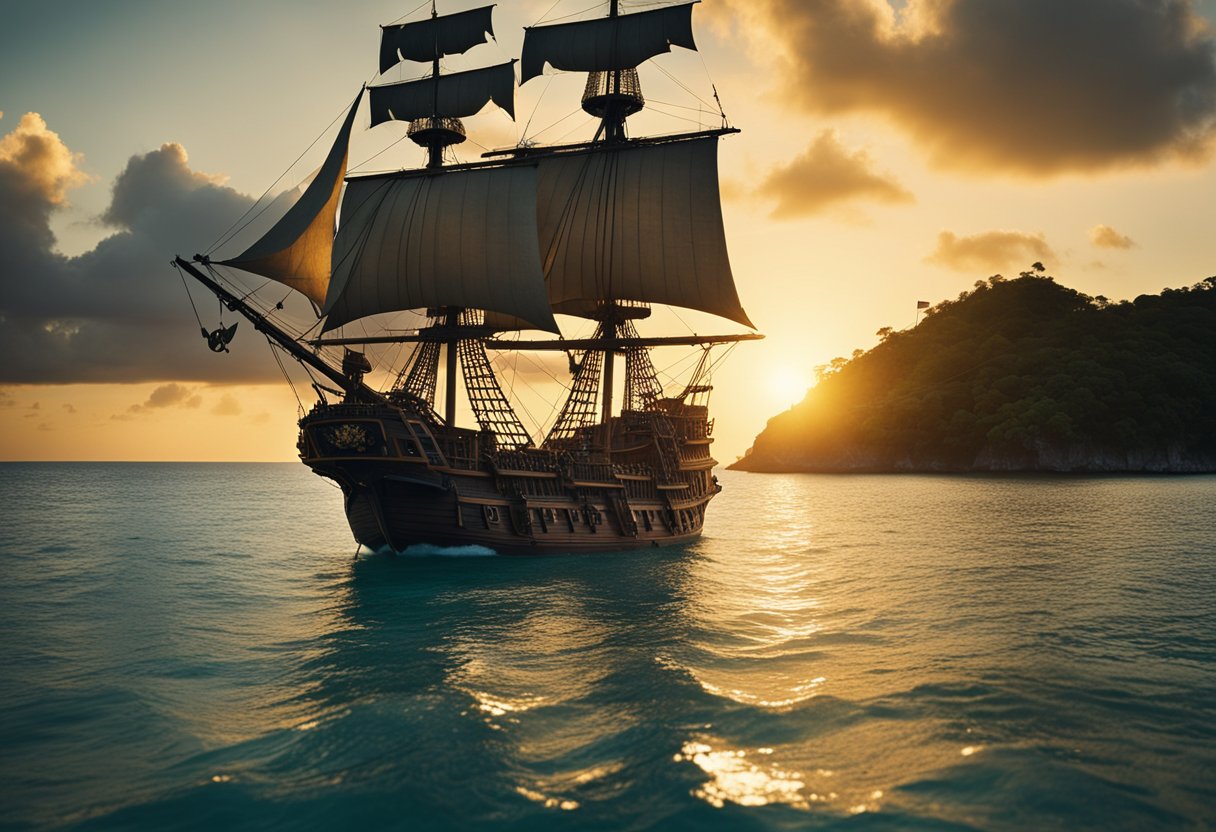
Updated On: March 15, 2024 by Aya Radwan
The Golden Age of Piracy is a fascinating chapter in maritime history from the late 17th to the early 18th centuries. During this period, the Caribbean Sea became the stage for dramatic encounters between pirates and colonial powers. Often romanticised in the modern imagination, Pirates were feared and admired for their audacity and independence. They commandeered ships, amassed fortunes, and created legends that have endured for centuries. The era witnessed acts of piracy, privateering, and naval warfare that left indelible marks on the history of seafaring nations.
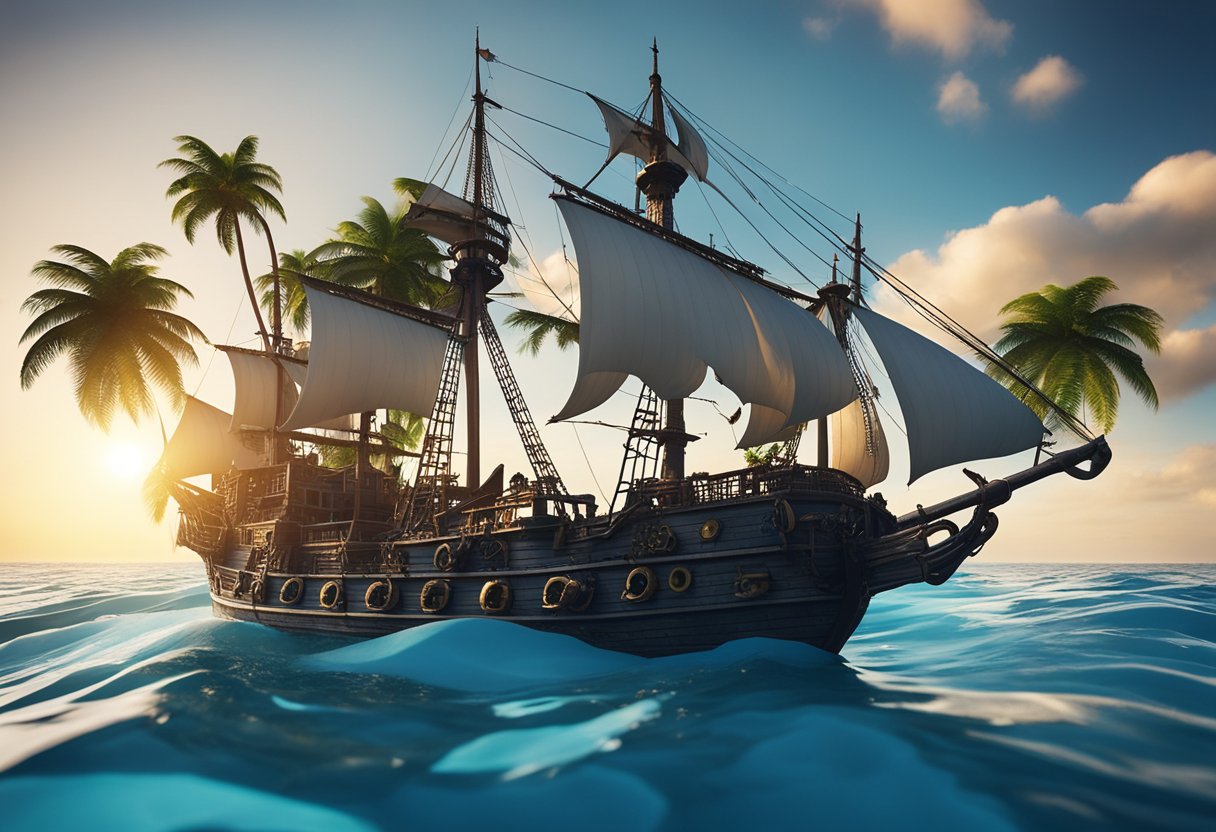
Contrary to the swashbuckling tales found in literature and film, a pirate’s daily life was arduous and dictated by the rules of survival and camaraderie. Understanding the reality behind the myths of the Golden Age of Piracy involves exploring the socio-economic conditions that led men and women to turn to piracy, the notable figures and their infamous campaigns, and the eventual decline of this era. Pirate havens offered a semblance of society outside the law, where disenfranchised individuals could thrive. Nonetheless, their threat to trade routes and empires brought fierce responses, including commissioning pirate hunters and passing anti-piracy laws.
The Dawn of the Golden Age of Piracy
During the late 17th century and early 18th century, a remarkable era known as the Golden Age of Piracy emerged, profoundly impacting the Caribbean and the New World. Our examination of this period sheds light on how seafaring bandits influenced the flourishing maritime trade and colonies.
In this nascent stage, European powers vied to control the New World’s lucrative resources. Pirates, often former privateers, exploited the busy trade routes, preying on merchant ships laden with goods. The shallow waters and complex archipelagos of the Caribbean provided excellent hideouts for these sea rovers.
Key Factors Leading to the Golden Age of Piracy:
- Escalation of Maritime Trade: Increased movements of ships packed with treasured goods attracted swashbuckling pirates.
- End of European Wars: Many skilled seafarers found themselves unemployed post-war, leading them to piracy for livelihood.
- Colonial Expansion: European nations established colonies in the New World, inadvertently creating new targets and opportunities for pirates.
By the early 18th century, piracy had reached its zenith, with notorious figures such as Blackbeard and Calico Jack becoming household names. Our foray into this period reveals a complex tapestry woven with daring exploits and treacherous waters, reflecting humanity’s relentless quest for wealth and adventure.
The roots of this age are a testament to the indomitable human spirit, beckoning us to explore further into the legends and realities of these maritime marauders.
Legendary Pirates and Their Infamous Deeds
The Golden Age of Piracy is marked by the exploits of notorious pirates whose legacies still echo through Caribbean history and lore. Among these, a few standout individuals shaped the image of piracy in their time and beyond.
Blackbeard: Edward Teach’s Reign of Terror
Edward Teach, better known as Blackbeard, was so menacing that his mere name struck fear into the hearts of seafarers. His flagship, the Queen Anne’s Revenge, was a formidable sight, armed to the teeth and flying the fearsome Jolly Roger. Blackbeard’s infamy was due to his imposing presence, the fuses burning in his beard, and cunning and brutal tactics. He blockaded the port of Charleston, holding the city at ransom, which was a bold and audacious move even by pirate standards. His career ended as dramatically as it had been conducted; Blackbeard met his demise in a fierce naval battle where the Royal Navy ultimately outmatched him.
Anne Bonny and Mary Read: Women on the High Seas
While piracy was predominantly a male occupation, women like Anne Bonny and Mary Read carved out their legacies amidst the lawlessness of the seas. Both defying societal norms, they were formidable pirates in their own right, not simply as partners to their male counterparts. Bonny, who joined Calico Jack’s crew, became known for her fiery temper and willingness to fight. Mary Read’s story is equally compelling; she sailed under Jack Rackham’s Jolly Roger, fought valiantly alongside her crewmates, and revealed her gender only when captured. Their tales of disguise, adventure, and defiance are etched in pirate history as intriguing accounts of women challenging the status quo on the high seas.
The Pirate’s Life: From Buccaneer to Pirate Hunter
In this journey through time, we examine the iconic figures that epitomised the transition from the buccaneer brotherhood to the relentless pursuit of piracy’s end in the Caribbean.
The Transformation of Henry Morgan
Sir Henry Morgan started as a privateer, with the tacit approval of the English government, preying upon Spanish ships. His reputation was that of a shrewd tactician and a daring leader. Morgan’s most audacious act was the sacking of Panama in 1671. After this feat, he returned to Jamaica, where he was arrested and sent to England. However, Morgan’s knighthood and subsequent appointment as Lieutenant Governor of Jamaica, rather than being punished, exemplified his metamorphosis from feared buccaneer to colonial administrator, enforcing the laws against piracy he once flouted.
Woodes Rogers: From Privateer to Governor of the Bahamas
Woodes Rogers celebrated for his circumnavigation of the globe and his exploits against Spanish maritime interests, and he shifted his sails from privateer to Governor of the Bahamas. Taking office in Nassau, Rogers faced a den of piracy and set about to reform it. He offered the King’s Pardon to any pirate willing to renounce their past, and for the reluctant, he brought the hunt to them. Woodes Rogers was pivotal in transforming Nassau into a fortified colony, quashing the pirate reign and restoring order, marking the decline of the pirate era in the Caribbean.
Key Battles and Conflicts
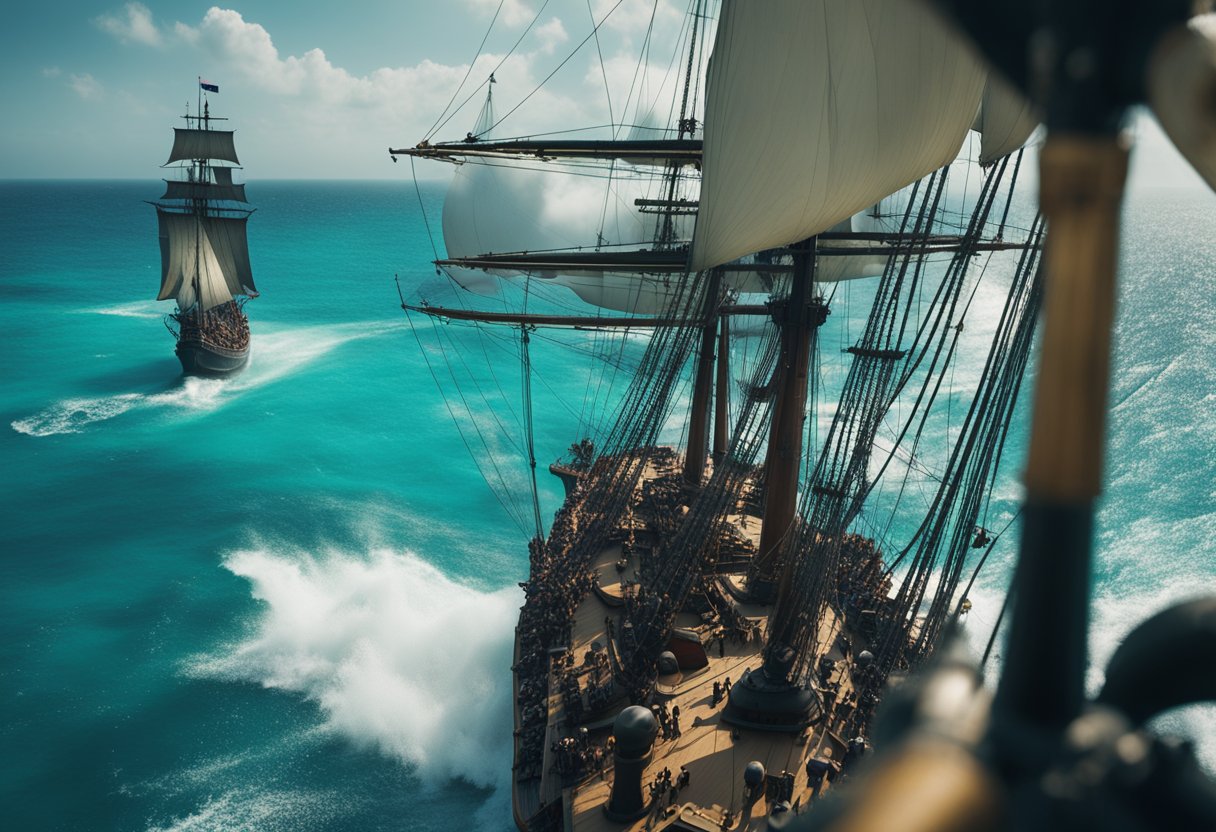
In the turbulent waters of the Caribbean, piracy and naval warfare were intricately linked, often leading to legendary battles and significant shifts in the control of the seas.
The Standoff at Nassau
Nassau, an essential stronghold for pirates, was the stage for a critical standoff. It became a pirate haven during the Golden Age of Piracy, with its strategic location proving advantageous for raiding treasure-laden ships. In 1718, the British Royal Governor Woodes Rogers arrived with a fleet to reclaim control of Nassau, leading to a tense standoff. Rogers offered pardons to those who surrendered, ending Nassau’s tenure as a pirate republic without direct conflict.
War of the Spanish Succession and Its Impact
The War of the Spanish Succession (1701–1714) was pivotal, as it contributed significantly to the surge in piracy. During the war, privateers were legally sanctioned to attack enemy ships, but once peace was restored, they turned to piracy. Notable naval battles in the Caribbean involved various European powers, including the Spanish and British navies. These clashes often influenced the distribution of colonial territories. After the war, emboldened by wartime experience, many sailors found themselves out of work, ultimately swelling the ranks of the Caribbean pirates.
Pirate Havens and Strongholds
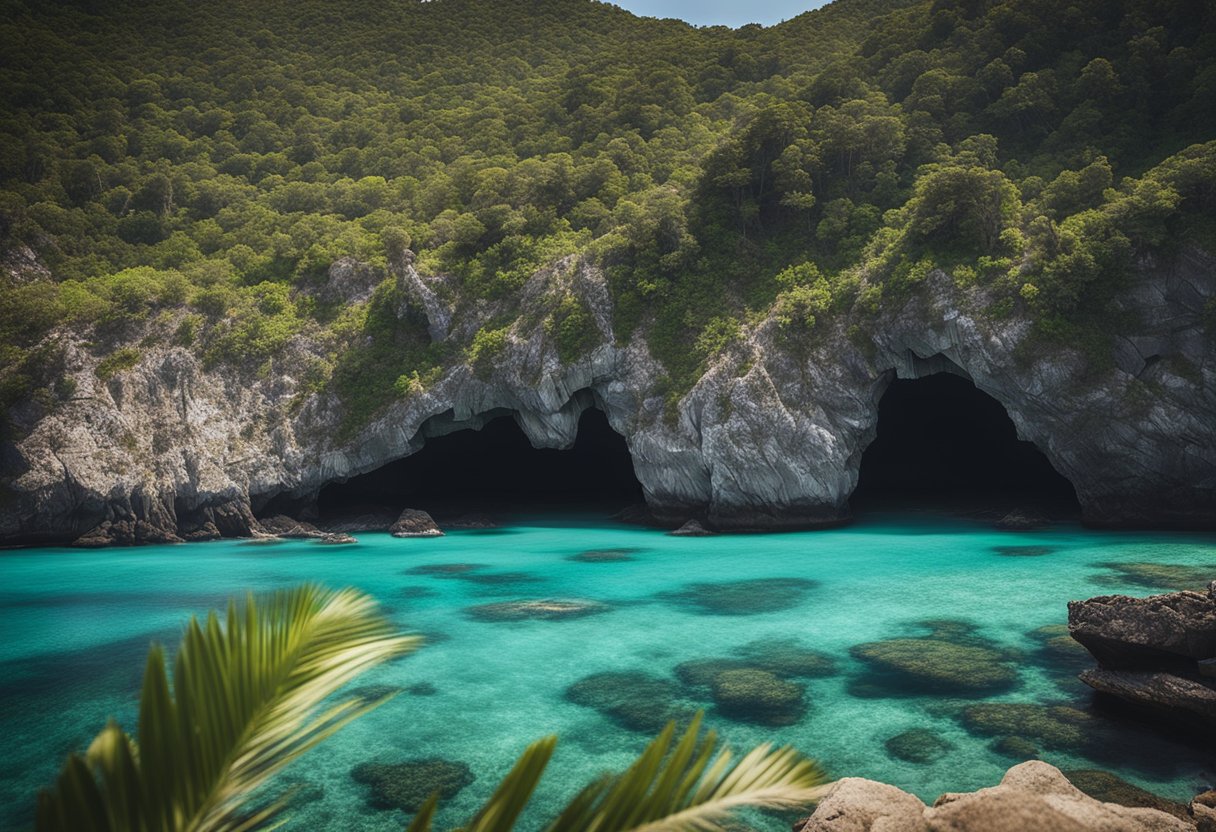
Pirate havens served as crucial bases where pirates could regroup, trade, and find camaraderie. These strongholds, often located on islands in the Caribbean Sea, became notorious hubs of pirate activity.
Nassau: The Pirate Republic
We recognise Nassau as the heart of what was once called the “Pirate Republic”. Situated in the Bahamas, it became a prime location for pirates due to its strategic position and lax enforcement of laws. By the early 18th century, Nassau had become a haven where pirates like the infamous Blackbeard could safely conduct their business, recruit crew members, and enjoy spoils.
Tortuga: The Buccaneer’s Sanctuary
On the other hand, Tortuga, located off the coast of Hispaniola, played a significant role as a buccaneer’s sanctuary. This island was well-regarded for its defensible harbour and accessibility to the lucrative shipping lanes. Tortuga established itself as an ideal base for pirates intent on attacking Spanish treasure fleets, making it one of the Caribbean’s first and most durable pirate strongholds.
The Global Impact of Piracy

Piracy had far-reaching consequences on global trade and national security during its peak, affecting powerful European nations and expanding its reach beyond the Caribbean to as far as the Indian Ocean.
European Nations and the Piracy Threat
Pirates’ actions significantly impacted European maritime powers like the British and the French. These sea robbers targeted not only treasure-laden galleons crossing the Caribbean but also disrupted the flow of goods and wealth, which was integral to the burgeoning economies of Europe. The threat to trade led to increased patrols and the development of anti-piracy laws. Shipping routes, especially those laden with goods from the West African coast, were prime targets, compelling European nations to seek formidable defences against pirate ships. The East India Company, which played a critical role in trade between Britain and the Indian subcontinent, also affected its operations, necessitating protective measures for their vessels.
Piracy Beyond the Caribbean: Indian Ocean Adventures
The influence of piracy extended beyond the Caribbean, with the Indian Ocean emerging as another theatre of their operations. Pirates in these waters jeopardised the crucial trade links between Europe and the East India Company’s commerce. It was common for pirate ships to launch expansive sorties from the eastern seaboard of Africa and into the warm waters of the Indian Ocean, where they captured merchant vessels carrying valuable spices, textiles, and other commodities. Their brazen activities constituted a global affair that disrupted international trade and shaped the maritime policies of nations for decades.
Pirate Ships and Navigation
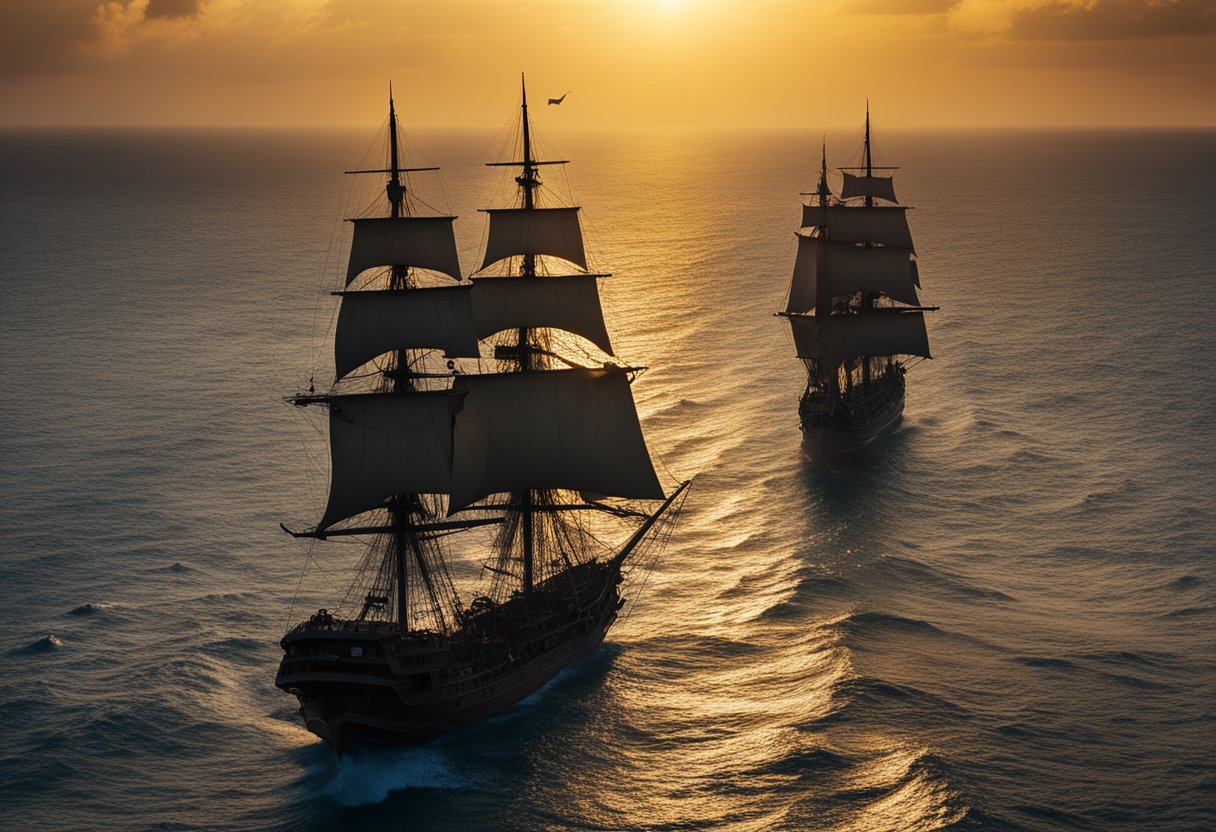
In the Golden Age of Piracy, pirate ships were the lifeblood of pirate crews, serving as their primary means of transport and the platforms from which they launched their attacks. Let’s explore the iconic pirate ships and the methods they used to navigate the treacherous waters of the Caribbean.
The Iconic Pirate Ship
Pirate ships came in various shapes and sizes, favouring the sloop for its speed and manoeuvrability. These small, fast vessels were perfect for quick getaways and could easily navigate the shallow waters of the Caribbean islands. Sloops generally carried a few cannons and were crewed by a tight-knit group of daring pirates. Larger ships, such as the galleon and frigate, were also captured by pirates and refitted for their needs. One distinguishing feature of pirate ships was the notorious Jolly Roger flag, typically showcasing a skull and crossbones or other macabre symbols designed to strike fear into the hearts of their targets.
Navigating Treacherous Waters
Pirates relied on expert navigation skills to successfully pilot their ships through the Caribbean’s perilous waters. Charts, compasses, and knowledge of the stars were essential tools. Navigators would use the sun by day and celestial bodies by night to chart a course across the vast ocean. Successfully outmanoeuvring their enemies and finding their way to hidden coves for rest or plunder was a testament to their seafaring prowess. Accurate navigation was crucial for locating targets and avoiding common navigational hazards like reefs and shallows that could easily doom a ship and its crew.
The Decline and End of the Golden Age
As the Golden Age of Piracy ebbed, the once fearsome presence of pirates on the high seas waned due to the colonial powers’ concerted efforts and the Royal Navy’s relentless pursuit.
The Capture and Execution of Pirates
The execution of numerous pirate captains significantly hastened the decline of this lawless era. Much of this was directed by skilled pirate hunters appointed by the authorities, which signalled a dire warning to those still at large. Among the legendary names who fell were Bartholomew Roberts and Charles Vane. Royal Navy ships, bolstered by the Crown, aggressively patrolled the Caribbean, closing in on pirate strongholds and intercepting treasure ships to prevent their looting.
The Aftermath of Piracy on Colonial Trade
With the notable reduction in piracy, colonial ports, once plagued by fear and unpredictability, began to thrive. Trade routes became safer, allowing for the smooth flow of goods and bolstering economies in the colonies and the European mainland. The diminished pirate threat also facilitated the establishment of new trade agreements, contributing to a more structured and prosperous maritime commerce. The end of the Golden Age had a profound and lasting impact on global trade dynamics.
Treasures and Plunder
In the heyday of Caribbean piracy, treasures and plunder were central to pirate life. These brigands sought illustrious wealth, often acquired through audacious raids on merchant vessels traversing the Spanish Main.
The Loot of the Spanish Main
The Spanish Main—spanning the Caribbean Sea and the mainland coast—was rich in trading ships heavy with gold, silver, and valuable goods. Pirates thrived here, their notorious practice of plundering vessels lending itself to countless legends. Some of the most coveted treasures came from Spanish galleons, with New World wealth bound for Europe. Through bold and often violent engagements, pirates would seize these ships, hoping to claim a share of the immense riches on board.
The Quest for Buried Treasure
Contrary to popular belief, burying treasure was rare among pirates. Yet, the legend of buried treasure remains an evocative image of our pirate mythology. The idea of treasure maps marked with an ‘X’ captures our imagination, but historical evidence of such practices is scarce. However, material wealth taken from plundering was used for trading at pirate havens, places where it could be exchanged for goods and services or enjoyed before setting sail once again.
The quest for this treasure, whether stored in chests or buried deep, continues to fascinate, symbolising the perilous freedom that pirates of the Caribbean once sought.
Myths and Legends of the High Seas
The tales of piracy during the Golden Age are steeped in fact and fiction, from tall tales of treasure to the real-life exploits of fearsome pirates.
Separating Fact from Fiction
When we delve into the lore surrounding the Golden Age of Piracy, we must discern authentic historical events from the embellished tales that have captivated us over the centuries. Many notorious pirates, such as Blackbeard, whose real name was Edward Teach, have become synonymous with the pirate image. His ship, Queen Anne’s Revenge, was as real as the man himself, yet the stories of his frightening visage and cruel deeds have often been amplified beyond the truth. Additionally, the Whydah was a real ship that met its fate in a storm, but the legends of its plundered wealth sometimes outshine its historical significance.
The Enduring Legacy of Piracy
Piracy’s influence on popular culture is undeniable, with characters like Calico Jack, known for his unique Jolly Roger flag, leaving a mark on our collective imagination. Jack, whose real name was John Rackham, undeniably contributed to the legend of the high seas with his exploits and connection to females in piracy, such as Anne Bonny and Mary Read. While the truth about hidden treasure troves remains elusive, the legacy of these seafaring raiders continues to inspire fascination and speculation about what untold riches might still be buried beneath the ocean waves.
Frequently Asked Questions
In this section, we address some of the most common curiosities surrounding the buccaneers and marauders of the Caribbean during the most notorious era of piracy.
Who were some of the most notorious pirates during the Golden Age of Piracy?
Among the most infamous pirates were Edward ‘Blackbeard’ Teach, Anne Bonny, Calico Jack Rackham, and Bartholomew ‘Black Bart’ Roberts. These figures were feared for ruthlessness and are remembered for their legendary exploits.
What factors contributed to the rise of piracy in the seventeenth and eighteenth centuries?
Significant factors were the increase in transatlantic trade, the end of European wars and the subsequent redundancy of privateers. These conditions and weak naval enforcement in the region offered a prime environment for piracy.
How did piracy affect maritime trade and society in the Caribbean?
Piracy substantially impacted maritime commerce, increasing shipping costs due to insurance premiums and the need for armed escorts. It also contributed to the lore and culture of the region, shaping its historical narrative.
When and why did the Golden Age of Piracy come to an end?
The Golden Age of Piracy drew to a close around the 1720s due to increased naval patrols and implementation of the Piracy Act of 1717, establishing a more organised campaign against pirates.
Which islands in the Caribbean were hotspots for pirate activity, and why?
Nassau in the Bahamas and Port Royal in Jamaica were prominent pirate havens. Their strategic locations provided prime bases from which to launch attacks and conduct trade of pilfered goods.
What enduring legends and myths originate from the Golden Age of Piracy?
Tales of buried treasure and the notorious ‘pirate code’ continue to captivate our imaginations. While often embellished, these stories are rooted in the real history and practices of the pirates from this era.






